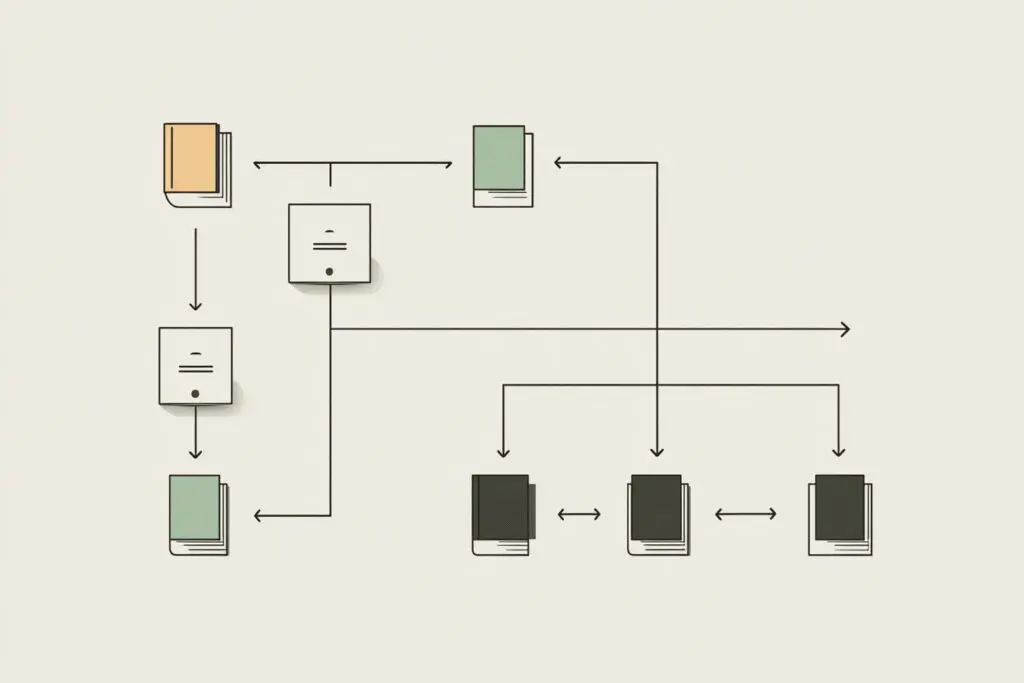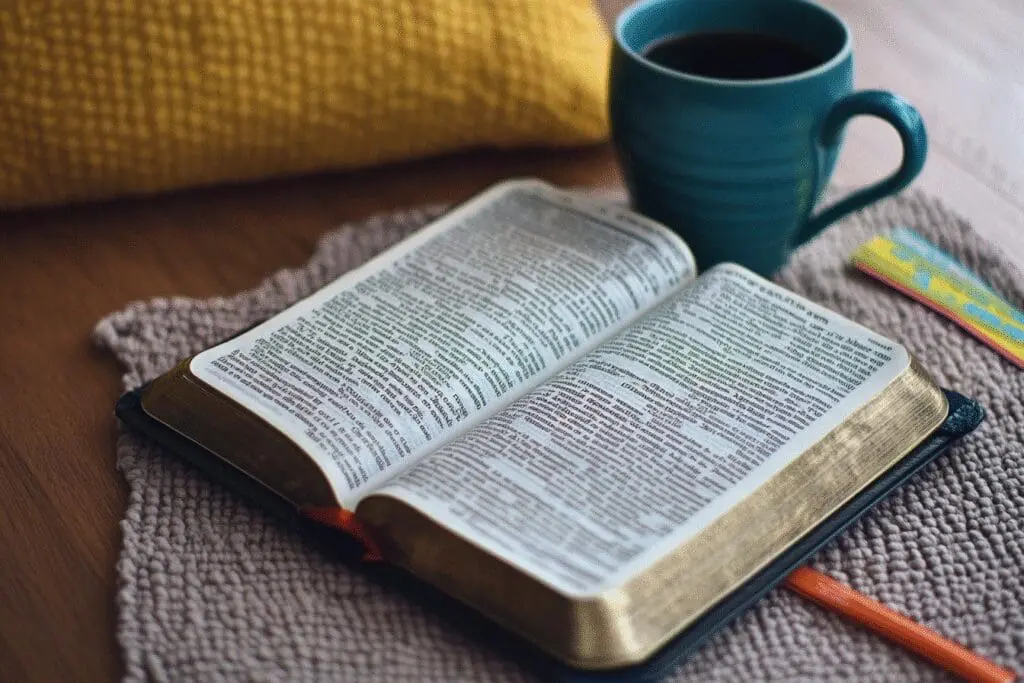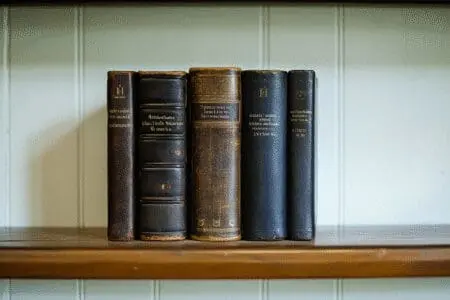Have you ever picked up the Bible, full of excitement, and said, “This year, I’m reading the whole thing”? I have. I remember starting right at Genesis 1:1. It was amazing. Creation, Noah, Abraham. I was flying through it. Then I hit Leviticus. Suddenly, my grand plan came to a screeching halt. All the rules and laws felt like hitting a brick wall. My journey ended before it really began. If that sounds familiar, you are not alone. So many of us have been there. It raises the big question: what order should I read the Bible to actually understand it and not give up?
That’s the real goal, isn’t it? To connect with God’s Word. We want to let it change our hearts and guide our lives. The good news is there is a much better way than just starting at page one. It’s about having a plan that makes sense. A plan that builds your faith instead of confusing you.
This guide is my honest attempt to share what I’ve learned. It’s a roadmap to help you navigate the beautiful, complex library of books we call the Bible. We will explore a simple path that has helped countless people fall in love with Scripture.
More in Bible Category
Where Should a Woman Start Reading the Bible
What Book of the Bible Should I Read
Where Is a Good Place to Start Reading the Bible
Key Takeaways for Your Reading Journey
- Don’t Start at the Beginning: Reading the Bible cover-to-cover is a common mistake for newcomers. The structure isn’t purely chronological, and some books are very dense.
- Begin with Jesus: The best starting point is the Gospels (like John or Luke). Jesus is the center of the entire biblical story.
- Build Context: After the Gospels, read Acts to see how the early church began. Then, read letters like Ephesians to understand Christian living.
- Explore the Foundation: Once you understand Jesus’s life and mission, go back to Genesis to see where God’s plan of salvation started.
- Find a Plan That Fits You: There is no single “perfect” plan. The best plan is the one that helps you consistently connect with God.
Why Doesn’t Reading the Bible Straight Through Work for Most People?
It seems logical, right? Start at the beginning and read to the end. We do this with almost every other book. But the Bible is not just one book.
Is the Bible Just One Book?
Think of the Bible as a library. It is a collection of 66 separate books. These books were written by about 40 different authors. They were written over a period of 1,500 years. That is a huge span of time.
These books include different types of writing. There is history, poetry, and prophecy. There are letters and books of law. You wouldn’t walk into a library and read every book in order from shelf to shelf. You would get completely bogged down. It’s the same with the Bible.
What Happens When You Try to Read It Cover to Cover?
When you start in Genesis, the stories are gripping. Creation, the fall, the patriarchs. It’s a powerful narrative. Exodus is just as exciting with Moses and the plagues. But then you arrive at Leviticus, Numbers, and Deuteronomy.
These books are incredibly important. They contain the foundation of God’s law for Israel. However, for a new reader, they can be very dense and confusing. They are full of rules about sacrifices, purity laws, and societal regulations that feel very distant from our modern lives. It is often at this point that good intentions fade and the Bible starts collecting dust on the nightstand.
The Foundational Plan: Where Should a Beginner Start Reading the Bible?
So, if not at the beginning, where do we start? The answer is simple. We start with the most important person in history: Jesus Christ. He is the main character of the entire Bible. The Old Testament points forward to Him. The New Testament reveals Him.
Why Should I Start with the Gospels?
Starting with Jesus makes everything else make sense. The Gospels are the four books that tell the story of His life, death, and resurrection.
- John: I often suggest people start with the Gospel of John. It was written so that you may believe that Jesus is the Christ, the Son of God. It clearly explains who Jesus is and what He came to do.
- Luke: After John, the Gospel of Luke is a great choice. Luke was a doctor and a historian. He gives a very detailed, orderly account of Jesus’s life. He shows the compassion of Jesus for the poor and the lost.
- Mark: This is the shortest Gospel. It is fast-paced and action-packed. It presents Jesus as a servant and a man of action.
- Matthew: This Gospel was written to a Jewish audience. It shows how Jesus fulfilled the Old Testament prophecies. It connects the Old and New Testaments beautifully.
Starting here builds your faith on the solid rock of Jesus Christ. You understand the “why” before diving into the deep history.
What Comes After the Gospels?
Once you have a good understanding of who Jesus is, you need to see what happened next.
The book of Acts is the perfect next step. It was also written by Luke. It tells the amazing story of how the Holy Spirit empowered the apostles. You see the church explode into life. It’s an exciting and faith-building book.
After Acts, you can move into some of Paul’s letters. These are called epistles. They were written to early churches to teach them how to live as Christians.
- Ephesians: This is a beautiful letter about our identity in Christ and the unity of the church.
- Philippians: This letter is filled with joy. Paul wrote it from prison, yet his focus is on rejoicing in the Lord always.
How Do I Understand the Old Testament Context?
Now that you know Jesus and the early church, you are ready. It’s time to go back and see the foundation. This is where Genesis comes in.
Reading Genesis now will feel completely different. You will see how God’s plan of redemption was there from the very beginning. You will understand the fall of man in the Garden of Eden. You’ll see why we needed a Savior in the first place. The stories of Abraham, Isaac, and Jacob will be richer. You will see them as part of the family line that eventually led to Jesus.
A Deeper Dive: What is a Chronological Bible Reading Plan?
After you have a solid grasp of the big story, you might want a new perspective. A chronological plan can be a fascinating way to read.
How is a Chronological Plan Different?
This plan doesn’t follow the order of the books in your Bible. Instead, it arranges all the Scripture according to when the events actually happened. For example, you might read a Psalm written by David right in the middle of the story of his life from 1st or 2nd Samuel. You read the prophets’ messages in the historical context of the kings they were speaking to.
Why Would Someone Choose to Read the Bible Chronologically?
Reading this way can bring the Bible to life in a new way. It helps you see the flow of history more clearly. You understand the context behind the prophecies and the poems. It connects the dots between different books. It can be a very rewarding experience for someone who is already familiar with the basic Bible story. You can find excellent chronological reading plans online from trusted sources. For instance, Blue Letter Bible provides a comprehensive chronological plan that many people find incredibly helpful.
Is a Chronological Plan Good for a First-Time Reader?
Honestly, I would not recommend this for a first-time reader. It can be a bit confusing. You jump back and forth between different books. The foundational plan we discussed earlier is much better for building a strong understanding from the ground up. The chronological plan is a great “next step” for your second or third time through the Bible.
The Thematic Approach: How Can I Read the Bible for Specific Needs?
Sometimes, you don’t need a grand, year-long plan. You need a word from God for what you are facing right now. This is where a thematic approach can be a lifeline. The Bible is a living book. It speaks to our real-world problems.
How Can I Read the Bible for a Topic Like Hope or Forgiveness?
Let’s say you are struggling with anxiety. Or maybe you need to find more joy. You can read the Bible specifically to see what God says about that topic.
- For Hope: Read through the book of Romans, especially chapter 8. Or Isaiah chapter 40.
- For Wisdom: The book of Proverbs is a treasure trove. Read one chapter each day for a month.
- For Comfort: The Psalms are the prayer and songbook of the Bible. Psalm 23 is a classic, but so many others speak to a hurting heart.
- For Practical Faith: The book of James is short and direct. It’s all about how to live out your faith in a real way.
This approach allows the Holy Spirit to minister to your specific needs. It’s a very personal way to engage with God’s Word.
Practical Tips for How to Read the Bible and Stick With It
Having a plan is essential. But we also need some practical habits to help us succeed. The goal is consistency, not perfection.
How Much Should I Read Every Day?
Start small. Seriously. It is much better to read one chapter a day and understand it than to read ten chapters and remember nothing. Maybe you just have time for a few verses in the morning. That’s okay! A little bit of Scripture each day can have a huge impact. Don’t let the size of the Bible intimidate you. Just take it one bite at a time.
What is the Best Way to Understand What I’m Reading?
Reading the Bible isn’t just about letting your eyes scan the words. We need to engage our hearts and minds.
- Pray First: Always start by asking the Holy Spirit to open your eyes. Ask Him to help you understand what you are about to read. Ask Him to speak to you through His Word.
- Get a Good Study Bible: A study Bible is a great investment. It has notes at the bottom of the page that explain difficult verses. It provides historical context, maps, and character profiles. It can be an invaluable tool.
- Keep a Journal: Write down what you are learning. A simple method is the S.O.A.P. method.
- Scripture: Write down one verse that stood out to you.
- Observation: What does this verse say? What is the context?
- Application: How does this apply to my life today?
- Prayer: Write a short prayer based on what you just learned.
Is it Better to Read Alone or With Others?
Both are important. Your personal time in the Word is where God speaks to you one-on-one. But there is also immense value in reading the Bible in community. Find a small group at your church. Or just ask a friend if they want to read a book of the Bible together. Discussing Scripture with other believers brings new insights. It provides encouragement and accountability. We are meant to live out our faith together.
A Journey, Not a Race
Ultimately, reading the Bible is about a relationship. It is about getting to know the God who loves you. He is the God who created you and has a purpose for your life. There isn’t a magic formula or a secret order that will unlock everything at once.
Don’t be discouraged if you miss a day. Don’t feel guilty if you find a particular book difficult. Just show up. Open the book. Ask God to speak. He will be faithful to meet you there. The perfect plan is simply the one that keeps you coming back to His presence day after day. It’s a journey, not a race. And it’s the most wonderful journey you will ever take.
Frequently Asked Questions – What Order Should I Read the Bible

What is a good order to read the Gospels and Acts to understand Jesus’s life and the early church?
Start with Luke chapters 1-2 and John chapter 1 for the birth of Jesus and his identity, then read Mark for a quick, action-packed view of Jesus’s ministry, followed by John chapters 14-17, 19-21 for Jesus’s final teachings, death, and resurrection, and Acts chapters 1-4, 9 to see the early church’s growth and key figures like Paul.
What order should I follow to understand the story of the kingdom and exile of Israel?
Read 1 Kings chapters 8, 11 to learn about Solomon’s reign and the kingdom’s division, then 2 Kings chapters 17, 24-25 to see Israel’s fall, Daniel chapters 1-6 for stories of faith during exile, and Ezra chapters 1-3, and Nehemiah chapters 1-2, 8 for returning to rebuild Jerusalem after captivity.
How should I read about Israel’s kings and the nation’s history?
Start with Exodus chapters 19-20 to learn about the Ten Commandments, then move to Joshua chapters 1-6 and 23-24 to see Israel’s entry into the Promised Land, followed by 1 Samuel chapters 8-10 and 16-17 to understand the rise of kings like Saul and David, and 2 Samuel chapters 7, 11-12 for David’s reign and promises of eternal rulership.
Which books should I read first to understand the foundation of the Bible’s story?
Begin with Genesis chapters 1-4 to learn about the creation and the fall, then Genesis chapters 12:1-3; 15:1-6; 17:1-8 for God’s promise to Abraham, followed by Exodus chapters 1-4 for Israel’s slavery in Egypt, and Exodus chapters 12-14 for the Passover and the Red Sea escape.




